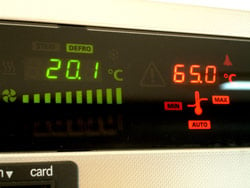Weathering testing: plastics and ageing

We all have sometimes faced the difficult decision of choosing between different car brands and models. This wide range of possibilities makes manufacturers seek to differentiate their products from the competition.
There are many key aspects that can differentiate a product from its competitors: price, size, design, quality or durability. One of them, durability, is one of the most important features for many clients when selecting a product. The main problem of ageing is that it takes so long to appear. For this reason, in these cases, previous experiences are very important, as well as the performance of accelerated ageing testing in a laboratory.
What accelerated ageing is
It is a phenomenon in which there is an advanced deterioration of substances that does not occur in a natural way but is caused by their exposure to an artificial environmental scenario that may affect both their structure and functionality.
What it is for
Accelerated ageing testing is used to measure the evolution of materials against extreme atmospheric contexts and, for that purpose, a series of specific climate conditions that usually stimulate the extreme conditions they will suffer from during their shelf life.
What these external agents are
Temperature
Extreme temperatures act as an accelerator of any ageing process in materials and products. Generally, high temperatures may cause the degradation of plastic, corrosion in metals or even loss of adhesion in paints and coatings. Low temperatures normally affect polymers due to their fragilizing effect.
Thermal shock
Sudden temperature changes or thermal shocks can also cause serious accelerated ageing problems. Many materials are prepared to withstand extreme temperature conditions. However, they do not cope well with sudden changes, which may result in mechanical problems or cracks. This type of test is very common in parts close to the engine since they are exposed to this kind of scenario.
Humidity
Humid environments or direct contact with water are a big problem for some products, so the corrosive action of water is measured in its different phases and forms, keeping in mind relevant factors such as relative air humidity and its salinity. This kind of condition normally generates discolouration, corrosion and oxidation problems and loss of functionality of coatings.
The goal of the test
This way, the main goal of accelerated ageing tests is to calculate or measure the shelf life of materials to ensure that products that are marketed or integrated into the productive chain comply with the quality requirements established in the current legislation.


